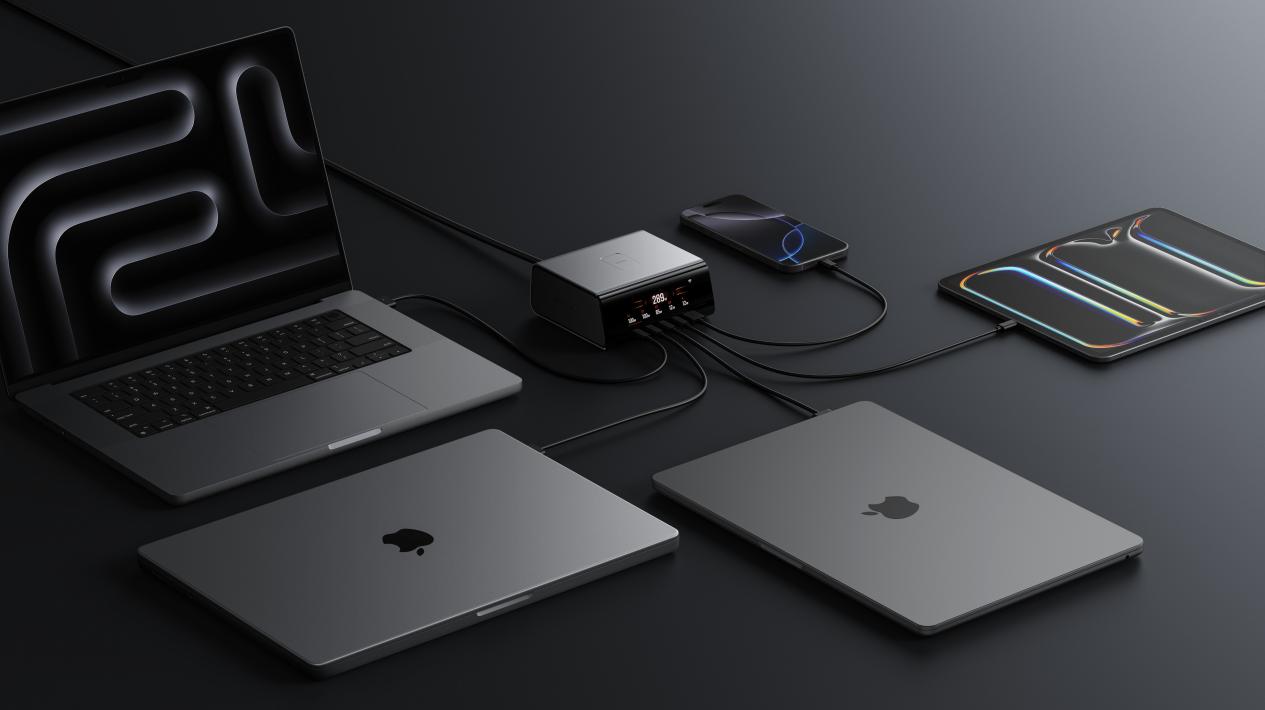Is It Possible to Convert USB-A to USB-C?
Can you plug a USB-C device into an older USB-A port using an adapter? Yes, absolutely. The more important question is what will actually happen when you do. A simple adapter creates a physical connection for basic data transfer or slow charging, but that's where it ends. It cannot grant your USB-A port any of USB-C's signature features, like high-speed Power Delivery charging or the ability to output video. The connection will always be limited by what the older USB-A port can do, a crucial fact for managing performance and keeping your hardware safe.
Why USB-A and USB-C Are Fundamentally Different
The obvious difference between USB-A and USB-C is their shape. But the real distinction, and the reason an adapter has limits, is the technology they were designed to support. The rectangular USB-A port is legacy hardware with a fixed set of capabilities, while the oval USB-C is a modern, versatile connector whose function is determined by the device it's built into.
The Port's Shape vs. The Technology Inside
A USB-A port's design is directly linked to older standards like USB 2.0 or USB 3.0. Its internal wiring is built only for those protocols, defining its maximum speed and power output. It also has a fixed role: the USB-A port is almost always the host (the computer or charger), and the device you plug in is the peripheral (the phone or flash drive).
In contrast, the USB-C connector is a universal physical shell. The connector itself doesn't guarantee any specific capability. A device's internal hardware determines what the port can do. This is why a USB-C port on a cheap accessory might only transfer data at slow USB 2.0 speeds, while the USB-C port on a high-end laptop can support USB4, Thunderbolt, drive 4K monitors, and rapidly charge the battery all at once. Different types have very different functions, and the experiences they bring are also completely different.
Key Features You Only Get from a True USB-C Port
The advanced hardware that can be packed behind a USB-C port enables features that are impossible for USB-A. These are built into the device's circuitry, which is why a simple adapter cannot create them.
USB Power Delivery (PD): This is an intelligent charging standard that allows for two-way power flow at much higher wattages—up to 240W. It enables fast charging for laptops and other large devices. A standard USB-A port is typically limited to between 4.5W and 7.5W and lacks the specific wiring needed to negotiate and deliver this much power.
Alternate Modes (Alt Modes): This allows the USB-C port to transmit non-USB signals by repurposing some of its internal pins. It can send native DisplayPort, HDMI, or Thunderbolt data, letting you connect directly to a monitor for video output with a single cable. USB-A ports do not have this hardware capability; their wiring is fixed for USB data and low power only.
Reversibility and Role-Swapping: Beyond the convenience of a flippable connector, USB-C technology allows connected devices to dynamically switch roles. For example, two connected phones could negotiate which one charges the other, or a tablet could act as a host for an external drive. This flexibility isn't possible with the rigid host-peripheral structure of USB-A.
Common Scenarios: The Right Adapter or Cable for Common Connections
Knowing technical theory is helpful, but applying it to real-world situations is what matters. Here are the two most common scenarios you'll face and the specific tool required for each.
Scenario 1: Connect a New USB-C Device to an Older Computer
The Problem: You need to connect your new smartphone or tablet (which has a USB-C port) to an older computer or car charger that only has the traditional rectangular USB-A ports.
The Solution: You need a USB-C to USB-A cable. This cable has the different connectors on each end, allowing a direct connection for transferring files or basic charging.
The data speed is limited by the older USB-A port. If your computer has a USB 3.0 port (often colored blue), you can get speeds up to 5Gbps. If it’s an older USB 2.0 port, your speed will be capped at a much slower 480Mbps.
Scenario 2: Use an Older USB-A Device with a New Laptop
The Problem: You need to use a standard flash drive, keyboard, mouse, or external hard drive (which all use a USB-A connector) with a modern laptop that only has small, oval USB-C ports.
The Solution: The right tool is a USB-C to USB-A adapter, often called a "dongle." This small adapter plugs into your laptop's USB-C port and provides a female USB-A port to plug your older device into.
If you need to connect several older devices at once, a multi-port USB-C hub or dock is a much better and more stable solution than using multiple individual adapters.


What Won't Work: An Adapter's Core Limitations
It's important to remember that an adapter is just a physical bridge—it can't magically add new technology to a port that doesn't have it. When you connect a USB-C device to a USB-A port, the entire connection is restricted to the limited capabilities of the older USB-A port.
This means two of USB-C's most important features will not work.
No High-Speed Charging (USB Power Delivery)
You cannot get fast charging speeds when using an adapter with a USB-A port. Your power bank or laptop might still charge, but it will do so at the slow "trickle" speed that the old USB-A port can provide. The adapter simply can't create the USB Power Delivery (PD) technology required for rapid charging.
No Video Output (DisplayPort or HDMI)
You cannot use a simple adapter to send a video signal from your computer's USB-A port to an external monitor. This feature, known as "Alternate Mode," requires specific hardware and wiring built into a USB-C port that allows it to transmit DisplayPort or HDMI signals. A USB-A port's internal pins are wired only for data transfer and low power, and no adapter can change that fundamental hardware design.


How to Choose a Reliable USB A to USB C Adapter
Not all cables and adapters are made equal. A cheap, poorly made one isn't just a bad purchase—it's a genuine risk. Low-quality accessories can fail to regulate power correctly, leading to over-voltage that can permanently damage the charging port on your phone or laptop. In some cases, they can even overheat and become a fire hazard.
Here are three critical rules to follow to ensure you buy a safe and reliable product.
1. Buy From Reputable Brands
Stick with well-known brands that have a history of positive reviews and provide customer support. Most importantly, look for products that list safety certifications like UL or CE. These logos indicate the product has been tested to meet established safety standards.
2. Read the Product Specifications
Don't just grab the cheapest option. Carefully read the product description to ensure it meets your needs.
- Check the Speed: Make sure the adapter is rated for the speed you need (e.g., "USB 3.0" or "5Gbps"). A higher-rated cable will still work on an older, slower port, but not vice-versa.
- Check for OTG: If you want to plug a flash drive into your Android phone or tablet's USB-C port, the adapter must explicitly state that it supports "OTG" (On-The-Go). OTG is the feature that allows your mobile device to act as a host for other peripherals.
3. Avoid Dangerous "Gender Changer" Adapters
Under no circumstances should you use simple plug couplers that have the same connector on both sides (e.g., male-USB-A to male-USB-A). These "gender changers" violate USB safety standards and can create extremely dangerous situations. For example, connecting two computers with such a device could cause both to try to send power at the same time, potentially shorting out the motherboards on both machines.
Connect Your Devices with Confidence!
A USB A to USB C adapters are a practical way to connect USB-A and USB-C devices for basic data syncs and low-power charging. They provide compatibility but cannot add features—the connection will always be limited by the older USB-A port. For these simple uses, a quality adapter is perfect. However, to access the high-speed charging and video output that make USB-C powerful, you must use a native USB-C port that is built to support those advanced functions.
4 FAQs about USB A to USB C Adapters
Q1: Will my phone charge slower using a USB-A to USB-C adapter?
Yes, almost certainly. Your charging speed is limited by the power output of the older USB-A port, which is much lower than what a modern USB-C port can provide with Power Delivery (PD). Your device will still charge, but it won't be the "fast charging" you may be used to with a direct USB-C connection.
Q2: Is it really that bad to buy a super cheap, no-name adapter?
It can be. Very cheap adapters often cut corners and may lack the proper safety circuitry required to manage power correctly. Over time, this could potentially damage the charging port on your expensive phone or laptop. Spending a little more on a certified product from a reputable brand is a wise investment for the safety of your devices.
Q3: What's the difference between an adapter dongle and a full cable? Which is better?
It depends on the task. A full USB-A to USB-C cable is generally better and more secure for frequently connecting a device to a computer or charger, as it puts less physical strain on the ports. A small adapter dongle is more portable and convenient for quickly plugging a USB-A flash drive, keyboard, or mouse into a laptop's USB-C port.
Q4: I need to connect my new USB-C laptop to an older HDMI monitor. What should I use?
For this, you need a specific USB-C to HDMI adapter or a USB-C hub that has an HDMI port. It is crucial that your laptop's USB-C port supports "DisplayPort Alternate Mode" (sometimes marked with a "DP" or lightning bolt symbol next to the port), as this is the feature that allows it to send out a video signal. A simple USB-A to C adapter won't work for this.